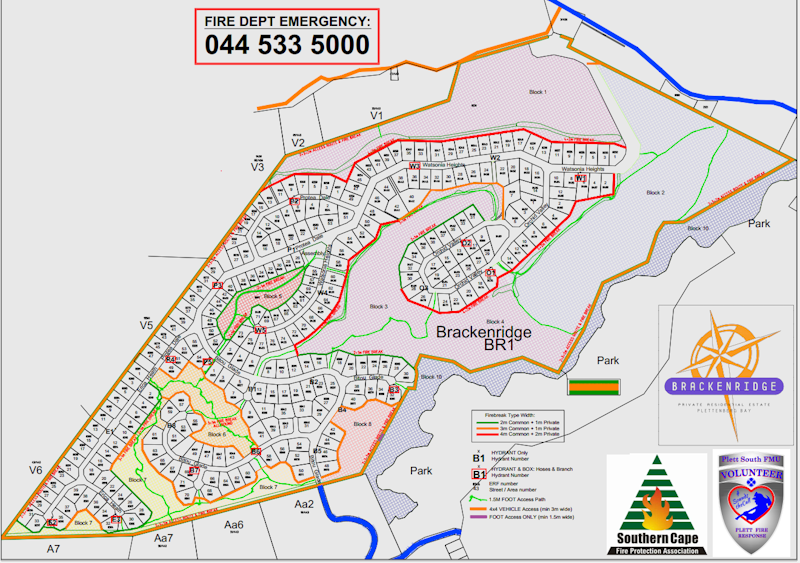We have all seen this happen on the mountains of the Western Cape: a splendid Fynbos vegetation going up in flames. The charred landscape that remains after such an event might look desolate to the human eye, but for the Fynbos flaura it is actually a blessing. But why?
The pros and cons of veld fires
Fynbos vegetation in the wild will normally experience a fire every couple of years. These fires occur for various reasons – some natural (like lighting strikes, excessive build-up of heat over the dry season, etc.), others man-made (negligence etc.). However, as long as these fires take place in a remote, truly wild area and do not come close to human settlements or infrastructure we can regard them as natural and overall beneficial: Indeed, fynbos needs to be exposed to fire to stay healthy, because its seeds will only germinate once they have been exposed to excessive heat. So from an environmental and biodiversity perspective the conclusion seems straight forward: “No fire, no Fynbos”.
But the perspective on veld fires changes dramatically when these occur in proximity to houses and other infrastructure. Moreover, even a fire that started in a far away area is potentially dangerous to humans. Those of us who experienced the 2017 Knysna fires (which spread to Plettenberg Bay and beyond within days) will recall how quickly things got out of hands: Coupled with strong winds, a smoldering underground fire in a far away forest sprung up, was funnelled across vast distances within a couple of hours and then became unstoppable.
This is why South Africa’s Forest and Veldfire Act of 1998 stipulates various measures to be taken by landowners in order to prevent an uncontrolled, extremely dangerous wildfire jumping onto human settlements.
Integrating the environmental and the fire prevention perspective
By definition, an eco-estate such as Brackenridge is an area where human settlement and natural vegetation go hand-in hand and next to each other. So is there a way to combine the environmental with the fire protection perspective onto fire? Yes – and the answer is to administer so-called ‘controlled burns’ which address three requirements in combination:
- the cyclical rejuvenation of the natural fynbos vegetation
- alien species control, and
- the prevention of uncontrolled wild fires through the burning of dead bush&wood.
What is a “controlled burn”?
Controlled burns are used world-wide as a method of veld and forest management. The National Geographic Society defines the term as follows: “Controlled burning, also known as prescribed burning, involves setting planned fires to maintain the health of a forest. These burns are scheduled for a time when the fire will not pose a threat to the public or to fire managers. In addition, (…) conditions should call for a controlled burn and weather conditions should be right to allow burning but not enable a fire to spread out of control. (…) Before a controlled burn is lit, a plan—or prescription—is drawn up. This plan includes details on how big the fire will be, what it will burn, and what managers hope to accomplish with the fire. It also includes the weather and environmental conditions under which the fire will burn and any situations that might require the fire to be extinguished.” – (for more details, see https://education.nationalgeographic.org/resource/controlled-burning/)
Integrated Fire Management at Brackenridge Estate
At Brackenridge Estate Fynbos and Fire Management must therefore go hand in hand – indeed, all of us should become involved. As Steve Ritky, our trustee responsible for Fire Prevention and himself a long-serving member of the Plett South Fire Management Unit, rightly observes: “If we all work together on this plan: assisting on the Fire Team, help move slow animals out of burn areas on the day of a burn, set up firebreaks on individual & common property, set up “defensible zones” around our homes, we can address the dangers AND move toward restoring our beautiful Fynbos.”
Beginning in July 2024 Brackenridge Estate therefore began with a sequence of controlled burns. Our natural Fynbos environment was segmented into eight so-called “blocks”, and in each of these blocks a controlled burn will take place. More on why these burns were necessary, how we prepare for them and how they are conducted, and what the outcome was can be found here:
- Brackenridge Controlled Burns – General Information (2024)
- Pre-burn information, February 2024
- Controlled burns, block 5&6 / 17 July 2024: report
The first two block burns were successfully conducted on 17 July 2024 in blocks 5 and 6 (see the map below):

(click here to download an enlarged version of the map)
Firescaping your garden
While the Estate is responsible for maintaining fire breaks and managing the fynbos vegetation in the common areas, fire preventation on the individually owned properties remains the responsibility of the respective property owners. A key element to this is the so-called “firescaping” of your garden – in other words, the selection, planting and maintenance of suitable fire-resistent plants in the right position right from the start. More detailed information about “firescaping” can be found here.